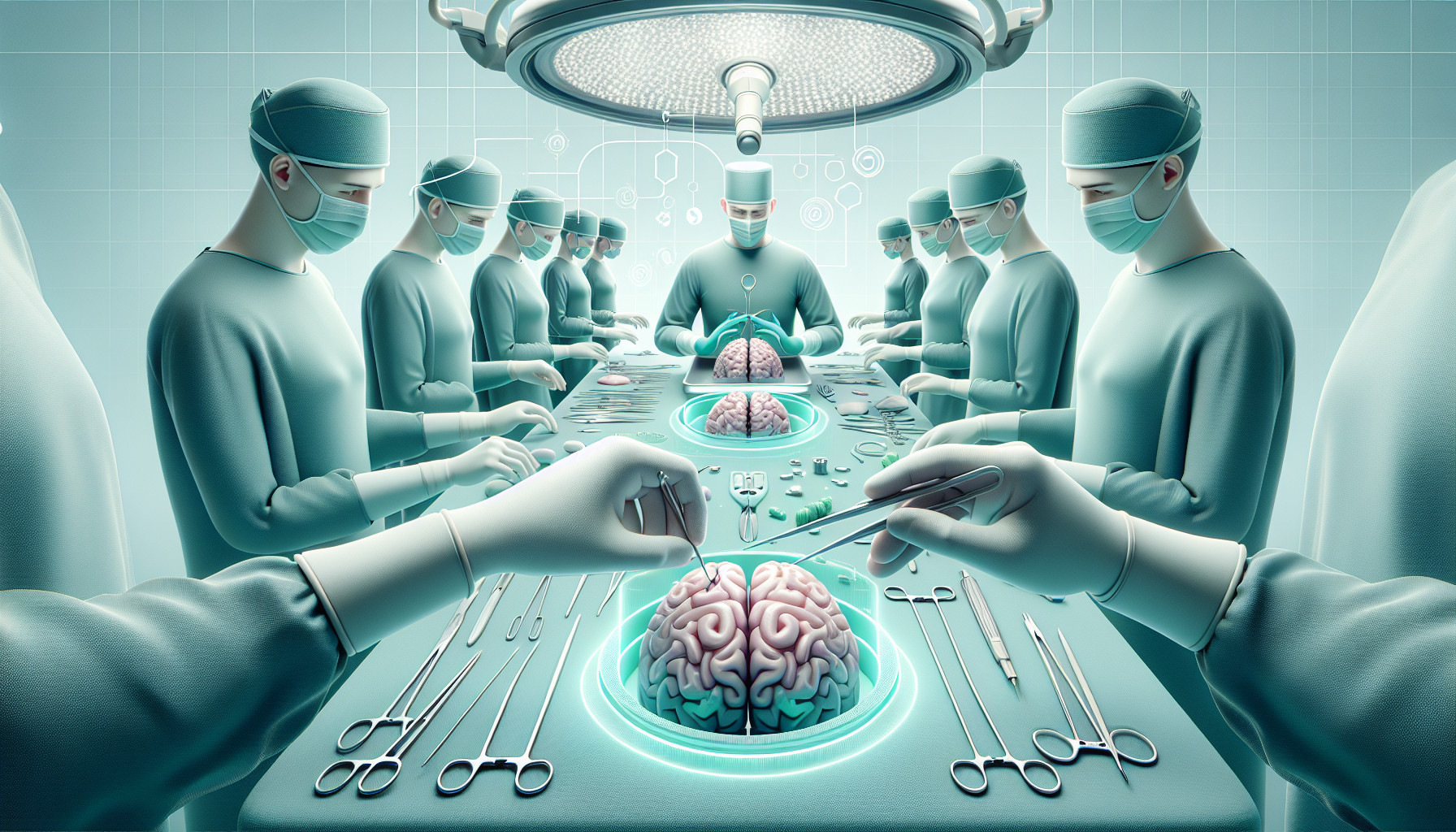Our Summary
This research paper discusses the safety of a procedure called electrocorticography (ECoG) during deep brain stimulation (DBS) surgery. DBS is a type of surgery that’s often used to treat movement disorders, and ECoG is a tool that scientists use to understand how different parts of our brain interact during this surgery.
To confirm the safety of using ECoG during DBS, researchers looked at data from four medical centers. They were particularly interested in any complications that occurred due to the surgery, such as infections or abnormalities seen in post-surgery brain scans.
After reviewing 367 surgeries where ECoG was used, they found that there were only seven complications, including four cases of internal bleeding and three infections. This means that less than 2% of the surgeries led to complications. They also found that using two ECoG electrodes instead of one did not increase the rate of complications.
In the end, nearly 96% of the surgeries were successful in gathering research data.
The results of this study suggest that using ECoG during DBS surgery is safe and does not significantly increase the risk of complications. This adds to previous research, which found no ECoG-related complications in 200 cases at a single center.
FAQs
- What is the purpose of using electrocorticography (ECoG) during deep brain stimulation (DBS) surgery?
- What were the main findings of the research study regarding the safety of using ECoG during DBS surgery?
- Did the use of two ECoG electrodes instead of one increase the rate of complications during the surgery?
Doctor’s Tip
A helpful tip a doctor might give a patient undergoing brain surgery is to follow all pre-operative instructions carefully, such as fasting before the surgery and avoiding certain medications. It’s also important to have a support system in place for after the surgery, as recovery can be challenging. Additionally, be sure to ask any questions or voice any concerns you may have before the surgery to ensure you are fully informed and comfortable with the procedure.
Suitable For
Patients who are typically recommended for brain surgery include those with conditions such as:
Brain tumors: Surgery is often recommended to remove tumors or to relieve symptoms caused by the tumor pressing on surrounding brain tissue.
Epilepsy: Patients whose seizures cannot be controlled with medication may benefit from surgery to remove the area of the brain causing the seizures.
Movement disorders: Conditions such as Parkinson’s disease or essential tremor may be treated with deep brain stimulation surgery.
Aneurysms: Surgery may be necessary to repair a weakened blood vessel in the brain to prevent it from rupturing.
Traumatic brain injuries: In some cases, surgery may be necessary to remove blood clots or repair damaged brain tissue.
Hydrocephalus: Surgery may be needed to insert a shunt to drain excess cerebrospinal fluid from the brain.
It is important for patients to undergo a thorough evaluation by a neurosurgeon and other specialists to determine if they are good candidates for brain surgery and to discuss the potential risks and benefits of the procedure.
Timeline
Before brain surgery, a patient will typically undergo a series of tests and evaluations to determine the best course of treatment. This may include imaging scans, blood tests, and consultations with neurosurgeons and other specialists. The patient will also be informed about the risks and benefits of the surgery and given instructions on how to prepare for the procedure.
During the surgery, the patient will be placed under general anesthesia, and the neurosurgeon will make an incision in the skull to access the brain. The surgeon will then carefully remove or treat the affected area of the brain, depending on the nature of the condition being treated. In the case of DBS surgery, electrodes will be implanted in specific areas of the brain to help regulate abnormal brain activity.
After the surgery, the patient will be closely monitored in the hospital for any complications or side effects. This may include pain, swelling, infection, or changes in cognitive function. The patient will also undergo rehabilitation and follow-up appointments to track their progress and make any necessary adjustments to their treatment plan.
Overall, the timeline of a patient’s experience before and after brain surgery can vary depending on the specific procedure and individual circumstances. However, with proper care and monitoring, many patients are able to recover successfully and see improvements in their condition.
What to Ask Your Doctor
- What specific benefits does using ECoG during DBS surgery provide compared to not using it?
- How does the use of ECoG during DBS surgery affect the overall success rate of the surgery?
- Are there any specific risks or complications associated with using ECoG during DBS surgery that I should be aware of?
- How experienced is the surgical team with using ECoG during DBS surgery?
- Will I need any additional follow-up care or monitoring due to the use of ECoG during my surgery?
- Are there any alternative methods or technologies that could be used instead of ECoG during DBS surgery?
- How will the data gathered from using ECoG during my surgery be used to improve future treatments or research in the field?
- How long is the recovery process expected to be following DBS surgery with the use of ECoG?
- Are there any specific lifestyle changes or precautions I should take post-surgery due to the use of ECoG?
- Can I speak with any previous patients who have undergone DBS surgery with the use of ECoG to hear about their experiences?
Reference
Authors: Sisterson ND, Carlson AA, Rutishauser U, Mamelak AN, Flagg M, Pouratian N, Salimpour Y, Anderson WS, Richardson RM. Journal: Neurosurgery. 2021 Apr 15;88(5):E420-E426. doi: 10.1093/neuros/nyaa592. PMID: 33575799
